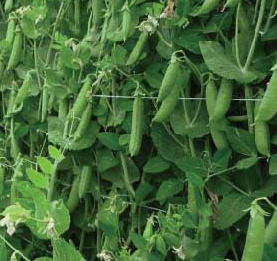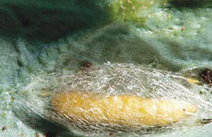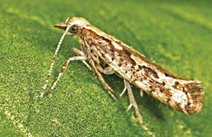Due to its varied climatic and ecological zones, Kenya provides a suitable environment for growing vegetables for export. The country has a well-qualified and experienced agricultural labour force, and its location and well-developed connectivity with key markets are key elements in the growing of fresh produce exports, writes Mr. David Mulandi of Amiran Kenya Ltd.
 Kenyan vegetable growers are organized into either large group farms, single farms or out growers who produce for export companies under contract. The latter have to follow rules put in place by the contacting company. This is to ensure that homogeneity and food safety standards are met to the satisfaction of the produce’s end user.
Kenyan vegetable growers are organized into either large group farms, single farms or out growers who produce for export companies under contract. The latter have to follow rules put in place by the contacting company. This is to ensure that homogeneity and food safety standards are met to the satisfaction of the produce’s end user.
All Kenyan produce for export are produced under strict adherence to Global GAP stipulations, which dictate on the requirements being met before anyone is allowed to export vegetables. Sufficient measures are put in place to ensure that sanitary and phytosanitary basics are considered by all growers.
Several government institutions are tasked with the certification and inspection of the Kenyan produce, which has led to steady growth in both export value and volume.
Economic importance of Export Vegetables in Kenya
Kenya is one of the key exporters of fresh vegetables to the European Union with over 87,000 tons per year. These exports are valued at more than 24 billion Kenya shillings.
Besides earning the country revenue through exports the vegetables segment contributes enormously in jobs creation for Kenyans and expatriates working in the industry. Thousands of Kenyans earn a living either directly or indirectly by working in or with the vegetable growing farms.
Farms employ many in areas like growing, transport, administration, procurement, security etc. Others, while not directly employed by the vegetable growers, earn through providence of farm inputs like seeds, farm infrastructure (greenhouses, shade nets, irrigation systems) pesticides, fertilizers and packaging materials. Others still, earn their living via providence of such services as trainings, logistics communication etc. These are rendered to the vegetable growers.
Majority of all these people are tax payers, benefitting the government as they benefit themselves.
Some of the vegetables grown in Kenya
Kenya grows numerous types and varieties of vegetables. With this said; we’ll focus on snow peas, garden peas, French beans, broccoli, cabbage and tomatoes.
Peas
Scientific Name: Pisum sativum
Order / Family: Fabales: Fabaceae
Common Names: Garden pea / English pea / green pea / snow pea / mangetout
The pea is an important frost-hardy, cool-season, nutritious leguminous vegetable that is widely cultivated throughout the world. As a cool-season crop, it is extensively grown in temperate zones. However, in the tropics and subtropics, it is restricted to cooler altitudes and winter season respectively. It is a rich source of protein (25%), amino acids, sugars (12%), carbohydrates, vitamins A and C, and the minerals calcium and phosphorus. It also has a small quantity of iron. Peas, being very rich in proteins, are valuable for vegetable purposes.
Climatic conditions, soil and water management for peas production To realize maximum yields in peas, one has to grow them in cool and moist conditions.
Temperature: peas can grow well between 10oC – 30oC, but the optimum temperature is 20oC. Above 30oC, there is poor pollination leading to poor yields.
Water: a minimum of 400-500 mm of rainfall is required during the growing season, and good soil moisture is essential during flowering and pod development.
Altitude: a minimum of 750 Masl is ideal.
Soil: this crop can grow on a wide range of soil conditions, but soils with a pH of 6-7.5 and high organic matter content are the best.

Field fertilization
The total uptake of a crop yielding 5 to 6 t of seed per hectare is 30 to 35 kg/ ha P and 200 to 250 kg/ha K. The garden pea responds well to a starter dose of N fertilizer, even when nodulation occurs. An indicative fertilizer recommendation on light, medium-rich alkaline soils is 40 kg N, 50 kg P, 150 kg K and 30 kg Mg per hectare.
Weed control
Weeds should be rigorously controlled. The critical period of weed competition is 3 to 8 weeks after emergence. The pea crop severely suffers because of weed growth at the early stages. This may be the result of wider spacing given for hand picking of green pods, or for slow growth of pea during the early stage. Later, the crop smothers the weed growth by covering the ground. Generally 2 to 3 weedings are necessary to keep the field free from weeds. Manual weeding is better than mechanical weeding as the latter may damage the root system. Weeding at later stages is avoided as it may also damage the crop by tramping and mechanical breakage of tender and succulent stems and branches. Weeds can be controlled by hand weeding where labour is cheap, whereas chemical weed control is more practical in largescale production. Early land preparation can encourage weed seeds to germinate so that they can be destroyed in subsequent cultivation.
French beans
Scientific Name: Phaseolus vulgaris L.
Order / Family: Fabales: Fabaceae
French beans are a highly specific vegetable. In Kenya they are mainly grown for export. There is a large demand for beans in both fresh and processed forms from West European countries
Climatic conditions, water and soil requirements
The optimum temperature range for growing French beans is 20-25oC, but can be grown in temperatures ranging between 14 and 32oC. Extreme temperatures result in poor flower development and poor pod set. However, French beans mature faster in warmer areas. However, French beans can be grown between 1000 and 2100 meters above sea level. Rain fed cultivation is possible in areas with well distributed, medium to high annual rainfall (900-1200 mm) but to maintain a continuous production especially during the dry season, irrigation is essential. During the dry season up to 50 mm of water per week is required. This could be applied through furrow or overhead irrigation. French beans grow best on well drained, silty loams to heavy clay soils high in organic matter with pH 5.5-6.5.
Fertilization
Macronutrients uptake (kg/ha) at a yield of 13 t/ha
|
N |
P2O5 |
K2O |
MgO |
CaO |
|
129 |
21 |
90-100 |
26 |
60 |
Base dressing (kg/ha)
|
N |
AS |
P2O5 |
SSP |
K2O |
SOP |
|
129 |
100 |
40-70 |
200-350 |
50 |
100 |
Runner Beans
Scientific name: Phaseolus coccineus
Family: Fabaceae
Description Originating from the highlands of Central America, the Runner Bean is a promising crop for high-altitude areas of the tropics. Large inflorescences (branched flower clusters) and edible beans are produced on rapidly climbing vines that are 3-4 m long, which, in the absence of freezes, are perennial, returning year after year from tuberous roots. Some varieties have a more shrub-like growth habits. Runner Beans are one of the most productive types of beans (900-1100 kg/ha dry beans in Kenya) in mild climates.
Cultivation
- Elevation: 0 – 2,000 m
- Rainfall: Consistent throughout year (500 – 2000 mm); susceptible to drought
- Soil Types: Well drained; wide range (light to medium textured is best) of soil types
- Temperature Range: 16-21°C; temps over 32°C limit seed formation
- Day Length Sensitivity: variety dependent (domesticated forms usually short-day plants)
- Light: Full-sun Runner Beans are nitrogen-fixing
Fertilization
- DAP 18.46.0 is applied at planting a rate of 30g/m.
- After about 4 weeks, top dressing with a high nitrogen fertilizer like Urea 46%N and a balanced NPK fertilizer is done.
- When the first flowers appear, high nitrogen fertilizer application is reduced, so that the crop may be ready for the reproduction phase.
Tenderstem Broccoli
Broccoli is rich in vitamins and minerals, and is a good source of Vitamin A, potassium, folic acid, iron, and fiber. Because of this, broccoli has been dubbed the “crown jewel of nutrition.” It is grown for its tasty spear and edible stem.
Climatic requirements
Temperature: Optimum soil germination temperature 22 °C whiles the optimum growing temperature 15.5 – 17 °C.
Soil requirements
It requires well-drained, loamy soils, with an effective rooting depth of approximately 450 – 600mm and a pH of 6-6.8.
Fertilizer requirements
N: 200 – 240kg/ha. 60 – 80kg/ha applied preplant and top dress balance at 1, 2, 3 and 4 weeks after transplant.
P: Plant uptake is 50 – 60kg/ha per season.
K: Plant uptake is 250kg/ha per season. 125kg/ha is applied pre-plant and 125kg/ha 4 weeks after transplant.
Microelements:
TSB sensitivity to low: Manganese (Mn), Zinc (Zn), Copper (Cu) High Micro-element sensitivity to: Boron (B), Molybdenum (Mo), Iron (Fe)
Main pests in export vegetables
1. Thrips
Thrips belong to the order Thysanoptera, and are tiny sucking insects that are destructive to plant tissue. They are important to monitor and manage, as pests that destroy and distort the growing shoots of most crops are quarantined. These pests will likely lead to flower damages, ultimately compromising on the yield. Approved crop protection products for thrips include; Azadirachtin, Beuvaria bassiana, Betacyfluthrin, Bifenthrin, Deltamethrin, Lambda-cyhalothrin, Metarhizium anisopliae, Pyrethrin and Spinosad
2. Caterpillars
Caterpillar is a broad term used for all destructive larvae of insect pests. It includes leaf miners, Cut worms, False codling moths, Fall Armyworm, Cabbage webworm, African bollworm etc. These pests are extremely destructive as they chew the green parts of a plant and can lead to total crop failure. Some attack and damage young seedlings leading to low crop densities, while others will eat plant foliage, reducing the photosynthetic surface. Leaf miners on the other hand burrow inside the leaves and fruits of some vegetable crops, significantly reducing the yield and shelf life. Crop protection products used in management and control of caterpillars include: Bacilus thurigensis, Beta-cyfluthrin, Chlorathalonil, Deltamethrin, Indoxicarb, Lambda-cyhalothrin, Lufenuron, Pyrethins, Spinosad, Spiromesifen, Tebufenozide and Thiocyclan Hydrogen oxalate.
3. Diamond Back Moth (DBM)
Scientific name: Plutella xylostella (Linnaeus) Egg: Diamondback moth eggs are oval and flattened, and measure 0.44 mm long and 0.26 mm wide. Eggs are yellow or pale green in color, and are deposited singly or in small groups of two to eight eggs in depressions on the surface of foliage, or occasionally on other plant parts. Females may deposit 250 to 300 eggs but average total egg production is probably 150 eggs. Development time averages 5.6 days.

Larva: The diamondback moth has four instars. Average and range of development time is about 4.5 (3-7), 4 (2-7), 4 (2-8), and 5 (2-10) days, respectively. Throughout their development, larvae remain quite small and active. If disturbed, they often wriggle violently, move backward, and spin down from the plant on a strand of silk. Overall length of each instar rarely exceeds 1.7, 3.5, 7.0, and 11.2 mm, respectively, for instars 1 through 4. Mean head capsule widths for these instars are about 0.16, 0.25, 0.37, and 0.61 mm. The larval body forms tapers at both ends, and a pair of pro-legs protrudes from the posterior end, forming a distinctive “V”. The larvae are colorless in the first instar, but thereafter are green. The body bears relatively few hairs, which are short in length, and most are marked by the presence of small white patches. There are five pairs of pro-legs. Initially, the feeding habit of first instar larvae is leaf mining, although they are so small that the mines are difficult to notice. The larvae emerge from their mines at the conclusion of the first instar, molt beneath the leaf, and thereafter feed on the lower surface of the leaf. Their chewing results in irregular patches of damage, and the upper leaf epidermis is often left intact.

Pupa: Pupation occurs in a loose silk cocoon, usually formed on the lower or outer leaves. In cauliflower and broccoli, pupation may occur in the florets. The yellowish pupa is 7 to 9 mm in length. The duration of the cocoon averages about 8.5 days (range five to 15 days).
Adult: The adult is a small, slender, grayish-brown moth with pronounced antennae. It is about 6 mm long, and marked with a broad cream or light brown band along the back. The band is sometimes constricted to form one or more light-colored diamonds on the back, which is the basis for the common name of this insect.
Damage: Plant damage is caused by larval feeding. Although the larvae are very small, they can be quite numerous, resulting in the complete removal of foliar tissue except for the leaf veins. This is particularly damaging to seedlings, and may disrupt head formation in cabbage, broccoli, and cauliflower. The presence of larvae in florets can result in complete rejection of produce, even if the level of plant tissue removal is insignificant.
Products commonly used for control of DBM: Flubendiamide and Trichogrammar nr. lutea
General product specifications to Europe (source infonet biovision)
(Specifications may vary within the EU countries and other European countries.)
French beans
1. Extra fine
Length: minimum 8 cm, maximum 10 cm
Diameter: minimum 4 mm, maximum 6 mm
Turgidity: should be less than 5% flaccid
Colour: mid to dark green Straight pods with very slight curvature
Pest and disease tolerance: 0-5% rust and 0-5% anthracnose. However, most supermarkets demand totally blemish-free
2. Fine
Length: minimum 10 cm, maximum 17 cm
Diameter: minimum 6 mm, maximum 9 mm Flesh mostly juicy and crisp
Pest and disease tolerance: < 5% (pest damage, pest infestation and mechanical damage). However, most supermarkets demand totally blemish-free crunchy and moist (with < 3% dehydration visible)
3. Bobby
Length: minimum 14 cm, maximum 17 cm
Diameter: minimum 8 mm, maximum 10 mm most supermarkets demand totally blemish-free
Snow peas
Length: minimum 6 cm, maximum 11 cm
Width: minimum 1 cm, maximum 2.5 cm Most supermarkets demand totally blemish-free
Red cabbage
- Receiving temperature should be at <150C a dark purple colour with a turgid, compact and round/circular head.
- There should be no pest damage or mechanical damage.
- They should be firm, free from discolouration and coarseness, and leaves should be well-formed.
- They should be generally clean and packaged in crates without damages and no soiling.
Tender stem broccoli
- Leaves should be medium to dark green
- Heads should be fresh, firm and turgid, no pest damage with no length and 6-10 mm diameter required, only allowing <10% outside the range.
- Single terminal heads should be used, with straight heads packaged in crates free from any soil contaminants
Garden peas
- The pods should be medium to dark green and straight in nature, with no pest damage on the pods.
- Mechanical damage is not acceptable, with a smooth and tender texture without any depressions.
- Diameter of the peas is recommended at 6-10 mm and no diseases.
The major causes of shipments interceptions in the EU are:
- Noncompliance with regulations.
- Presence of harmful organisms (quarantine pests) in consignment
- Pesticide residues above the acceptable limits in and/or on produce.
- Other quality considerations.
- Inappropriate documentation.
The major quarantine pests are:
- Bollworms (Helicoverpa spp.).
- Leaf miner (Liriomyza spp.)
- White flies
- Fruit flies
- Thrips
- Spider mites
The package material should contain the following information:
- Shipper name and address
- Product and quantity
- Class
- Country of origin
- Recyclable symbols and the green dot where they apply
Challenges facing Export vegetable growers
- Insufficient rainfall in some parts of the country leads to low water levels, hindering production of vegetables. Droughts lead to job cuts as the farms will not be producing enough crop.
- Restrictions of using some products by the market while at the same time demanding a clean produce is a delicate balancing act by the growers and has led to limited production by some growers.
- Migratory pests have become a major concern for growers. Some of these pests are difficult to control once infestation has occurred and cause great losses to growers.
- Handling of fresh produce requires a lot of keenness due to their perishability and sometimes growers get huge losses due to post harvest loses

Spray Programme: Positioning of Spinetoram (Radiant) vs methoxyfenozide (Runner)
|
Think Portfolio and Rotation – spinetoram and methoxy highly complementary |
|
|
Use RUNNER when;
|
Use RADIANT when;
|
